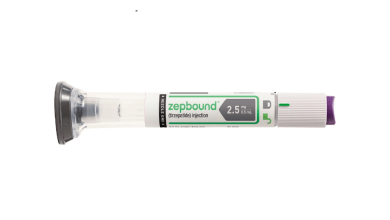
You know that feeling when your equipment just isn’t cutting it on the jobsite? Maybe your excavator’s doing its best, but it’s still taking twice as long to finish trenching. Or maybe your loader seems fine—until you’re moving awkward materials and realize it’s just not built for the task. Here’s the thing: it might not be the machine’s fault.
More often than not, the real difference in performance comes down to what’s attached to your gear. Attachments can turn a standard machine into a jobsite powerhouse, unlocking capabilities you didn’t know you needed—until suddenly you can’t imagine working without them.
Yet, attachments tend to be an afterthought. They’re viewed as optional, when in reality, they’re the secret weapon for anyone looking to boost productivity, reduce downtime, and adapt to changing site conditions. Whether you’re running a lean operation or managing multiple crews, the right attachment could be the upgrade you didn’t realize you needed.
You know that feeling when your equipment just isn’t cutting it on the jobsite? Maybe your excavator’s doing its best, but it’s still taking twice as long to finish trenching. Or maybe your loader seems fine—until you’re moving awkward materials and realize it’s just not built for the task. Here’s the thing: it might not be the machine’s fault.
More often than not, the real difference in performance comes down to what’s attached to your gear. Attachments can turn a standard machine into a jobsite powerhouse, unlocking capabilities you didn’t know you needed—until suddenly you can’t imagine working without them.
Yet, attachments tend to be an afterthought. They’re viewed as optional, when in reality, they’re the secret weapon for anyone looking to boost productivity, reduce downtime, and adapt to changing site conditions. Whether you’re running a lean operation or managing multiple crews, the right attachment could be the upgrade you didn’t realize you needed.
Why Attachments Matter More Than You Think
Attachments might seem like a bonus, but in today’s fast-paced construction and earthmoving environments, they’re more of a necessity. The demand for flexibility is growing—jobs vary in scope, terrain, and complexity, and contractors are expected to adapt quickly without investing in an entirely new fleet of machines. That’s where attachments come in.
Think about it this way: a base machine like an excavator or a skid-steer loader has its limitations. But hook up a hydraulic breaker, tilting bucket, or grapple attachment, and suddenly, that same piece of equipment can take on entirely new roles. You’re not just digging anymore—you’re demoing, grading, lifting, and trenching with precision.
It’s not just about adding functionality, though. The right attachment can dramatically increase efficiency. For instance, a tiltrotator can save you dozens of repositioning movements, which, over time, cuts down job hours and operator fatigue. And attachments like trenchers or compactors can reduce the need for multiple machines on site, making your operation leaner and more cost-effective.
Real-world applications are everywhere. A standard loader used for material handling can be transformed with a broom attachment for quick site cleanup, or a snow blade in colder months. It’s not a one-trick pony—it’s a multi-tool, ready to adapt.
And let’s not forget how attachments can improve safety. Instead of forcing a machine to do a job it wasn’t built for, an attachment tailors that machine to the specific task, reducing stress on the equipment and operator alike.
Bottom line? Attachments don’t just enhance performance—they redefine it. They allow you to respond faster, work smarter, and stay competitive without constantly expanding your fleet.
The Advantage of Temporary Solutions with Big Impact
One of the smartest strategies on today’s job sites? Getting the gear you need only when you need it. Full ownership of a wide range of attachments isn’t always realistic—especially when certain tools are only relevant for niche projects or seasonal tasks. That’s where the power of short-term access really shines.
Instead of sinking capital into equipment that might sit unused for weeks or months, many contractors are turning to flexible options. Short-term solutions let you scale your capabilities up or down depending on the project, without locking yourself into a long-term investment. It’s about staying agile—meeting project demands head-on without stretching your budget thin.
This approach also opens the door to trying new attachments without the commitment. You might discover a tilt bucket is the perfect tool for grading after all, or that a hydraulic compactor cuts down your labor hours more than expected. With short-term hire options, you’re not guessing—you’re testing in real-world conditions, with real results.
And when you’re working with regional providers, availability can often be tailored to your specific location and timeline. Whether you’re managing a busy urban site or a remote job in rugged terrain, local access can streamline logistics and reduce downtime.
Excavator and loader attachments for short-term hire can be a cost-effective alternative to buying the equipment outright. It’s a low-risk, high-reward move that can boost the machine’s performance right when you need it most—without the overhead of permanent ownership.
Key Attachments That Deliver a Performance Upgrade
Now let’s talk about the real game-changers—the attachments that can turn a standard workhorse into a jobsite MVP.
First up, hydraulic hammers. If you’re dealing with demolition, hard soil, or rock-heavy terrain, these tools add serious power to your machine. Instead of switching to a separate breaker, just plug in a hammer and your excavator becomes a wrecking force.
Then there’s the auger. Ideal for fence posts, footings, or tree planting, this attachment adds precision and speed to digging jobs. Pair it with the right drive motor, and you’ve got a setup that makes manual digging feel like ancient history.
Another unsung hero? The tilting bucket. Unlike standard buckets that require constant repositioning, a tilting version lets you grade and shape with finesse. It’s a subtle upgrade, but one that can shave hours off landscaping and site-prep tasks.
For handling loose materials or debris, consider a grapple. It turns your loader or excavator into a versatile handler, especially useful in scrap yards, land clearing, or storm cleanup. It grips, lifts, and moves irregular loads that a bucket just can’t manage.
And if you’re looking for something that works in tighter spaces or delicate environments, a compaction wheel or vibratory plate attachment can reduce the need for additional equipment on site. You get consistent soil compaction directly from your existing machine, saving both time and fuel.
What all of these tools have in common is simple: they add range. Instead of swapping out machines, you’re adding precision, control, and speed with a simple change of attachment. That’s the kind of upgrade that pays for itself—not just in performance, but in versatility.
Avoiding Common Mistakes When Choosing Attachments
While attachments can revolutionize how your machine performs, the wrong ones can do the opposite. It’s surprisingly easy to fall into the trap of assuming all attachments are universally compatible—but that’s rarely the case.
One of the most common missteps is choosing attachments that aren’t properly matched to your machine’s size, weight capacity, or hydraulic capabilities. Just because it fits doesn’t mean it functions correctly. A hydraulic hammer that’s too large, for example, can overstress your excavator’s arm and reduce both performance and lifespan. On the flip side, an undersized auger might leave your crew struggling to finish what should be a quick task.
Another issue? Overestimating what an attachment can do. Every attachment has its limits, and pushing those boundaries can lead to inefficient results or even equipment failure. For instance, using a general-purpose bucket for fine grading might save time on switching tools—but the lack of precision can cost you more in rework.
Then there’s the compatibility gap between brands. Not all couplers are created equal, and it’s easy to overlook the finer points of how an attachment locks onto your machine. Some systems require dedicated couplers or adapters, and ignoring those details can result in delays, safety issues, or unexpected expenses.
So how do you get it right? Talk to your supplier before you commit. Describe your machine model, the kind of work you’re doing, and the site conditions. A good provider will help you make a smarter, safer match. And if you’re unsure, consider testing an attachment on a short-term basis to make sure it’s really what you need before making a bigger investment.
Conclusion
Attachments might not be the flashiest part of your machine—but they’re easily the most underrated. When chosen wisely, they don’t just enhance performance; they completely redefine what your equipment can do.
In today’s fast-paced, cost-conscious world, versatility is everything. You need machines that can adapt to each job without blowing your budget or overcomplicating your fleet. Attachments are how you get there. They turn a single machine into a multitool, ready to take on specialized tasks with confidence.
Short-term hire options make this even more accessible. You can experiment, adapt, and improve your workflow without the financial commitment of buying new gear outright. Whether you’re grading a lot, trenching in tight spaces, or managing post-storm cleanup, the right tool at the right time makes all the difference.
So the next time your machine feels like it’s falling short, don’t blame the machine. Take a closer look at what’s attached to it—and what could be.




